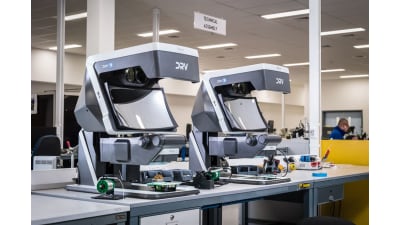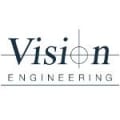Vision Engineering and its all-new concept of quality control

Rob Freeman, former chief mechanic for Jaguar Racing, gave birth to Vision Engineering in 1958, in Woking. The company aims at innovative optical systems for industrial and research applications.
After over 60 years of expertise in the field, the 26th of September, 2019 the firm showcased the DRV-Z1 in Milan: an innovative microscope used to visualize images in 3D Full HD which can also be shared on the net.
The entire national industry press was invited to the event, and Expometals.net couldn’t miss the chance of being there.
Philip Townend, Vision Engineering Marketing Manager, and Michelangelo Prendin, Vision Engineering Italy General Manager, guided the audience through the functionalities of this innovative patented system.
This all-new microscope makes use of no glasses or VR visors, thus enabling a simple and ergonomic interaction with the item under inspection. The 3D visualization ensures a precise perception of volumes and the real-time connectivity grants enormous time saving in terms of quality check.
At the end of the event we had a little chat with Michelangelo Prendin to better understand this world-class device.
What are the reasons for this event?
Once we finished developing this new innovative technology, we felt the need to communicate the DRV-Z1 potential to the world.
Is this your first time organizing such event?
This is our very first event of this class in Italy. We have showcased other systems, of course, but none of them was as exclusive as DRV-Z1: it is the only one in the world that allows 3D image sharing among other devices around the world.
Is DRV-Z1 a worldwide exclusive?
Most of Vision products are exclusives: we design, manufacture and commercialize them around the world thanks to our subsidiaries.
How long have you been working on DRV-Z1?
We’ve been working on it for the last few years. We began thinking about TriTeQ3, the technology behind DRV-Z1, around ten years ago. At the time we used to manufacture video microscopes, and initial feedback led to us combining those devices and our expertise in 3D vision: that is when TriTeQ3 was born.
What are the main application fields for DRV-Z1?
The main application is quality control: many elite-field components need an in-depth check, such as medical equipment or small parts for the automotive and aerospace industries.
And what about the fasteners market?
Fasteners and small parts are our main focus. Many small parts need a microscope to be better examined for an extended time. Equipment such as DRV-Z1 reduce fatigue and allow better overall quality control over longer periods of time.
There are many automatic inspection systems for in-line control. Why should companies be interested in this microscope?
Automatic systems, by their nature, can only highlight the most relevant defects, in terms of shape, dimensions and structure. Parts with such evident flaws are identified and discarded.
The microscope grants many advantages: it allows these parts to be further examined to determine if they are really to be thrown away or not, it can help in examining even the smallest parts or those components that require one-to-one analysis.
Do you think this technology will replace optical and digital microscopes?
I don’t think so. At the moment, only high precision facilities, such as laboratories or R&D departments, have the need for detailed 3D checking and live image sharing. If you need to carry out rework operations you can use traditional microscopes, or even eyepiece-less stereo microscopes like our Lynx Evo.
Have you already had any orders for the DRV-Z1? How is the feedback?
The very first DRV-Z1 prototype was showcased at the Control fair in Stuttgart, in May this year, and some units have already been sold. There are ongoing promotional activities in the USA and the feedback is extremely good.
Will you share the patent?
We will not. The DRV-Z1 visor may be embedded in many fields: I personally imagine it being used for CT scans or in X-ray machines. In any case, it will remain a Vision exclusive.
What comes after DRV-Z1? What will your next step be?
Once the TriTeQ3 was patented, we decided to develop the Deep Reality Viewer Zoom 1. The next step will be implementing this technology to visualize 3D Cad models or images resulting from X-ray machines, although it is still a work in progress. We want the DRV to become a 3D viewing standard.
DRV-Z1 will be displayed to the public in every event Vision Engineering will take part in. It is also possible to contact the company and book a visit in Vision’s showroom around the world.

